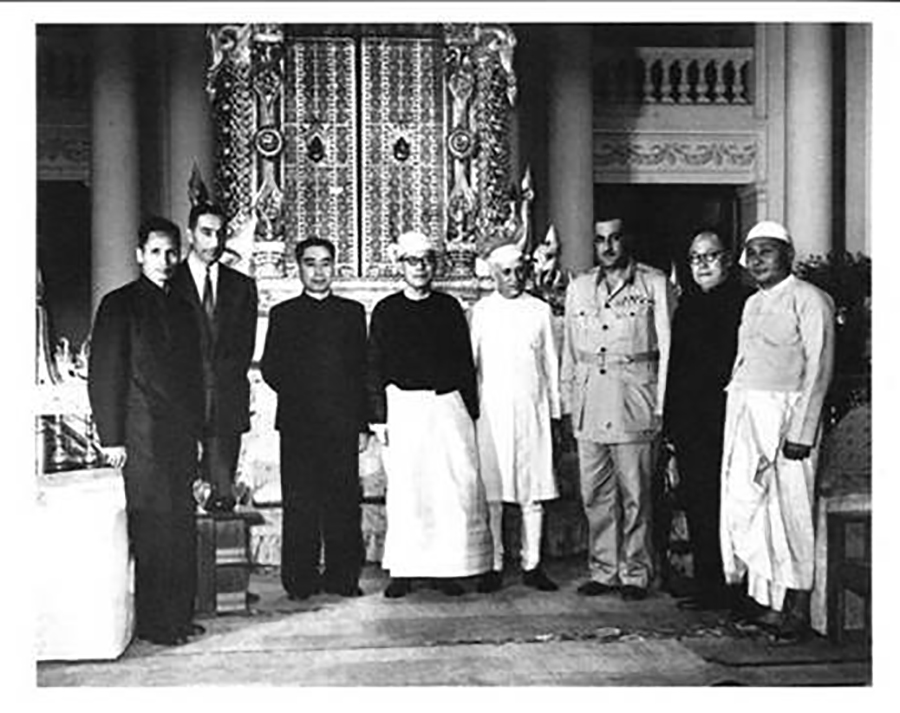In British Burma, the pinnacle of colonial rule was the Government House: the residence of the governor of Rangoon (now Yangon) and the seat of the colonial government.
The mansion, now demolished, was located at the corner of Pyay Road and Ahlone Road in Dagon Township, which is now the site of the Yangon regional parliament. Construction of the residence began in 1892 and was completed in 1895. It cost 717,000 rupees at the time and was designed by architect Hoyne-Fox, who also designed the Secretariat Building. The Governor House building, according to Hoyne-Fox, was a revived form in the Queen Anne style that was popular in the last quarter of the 19th century and early decades of the 20th century.
Governor Sir Herbert Thirkell White lived at the three-story residence from 1905 to 1910 but said that the building was not a fine residence at all, despite its grandeur.
Nonetheless, the gigantic house and the surrounding 90-acre plot of land provided great comforts for its masters. The residence was complete with a theater, swimming pool and bomb shelters and also employed nearly 100 staff.

Specially-trained Scottish Guards guarded the residence with bayonets and rifles. Honking horns and loud noises were prohibited near the residence.
Over a period of 55 years, from 1895 to the fall of colonial rule in 1940, a total of nine governors and five vice-governors resided at the house.
Sir Joseph Augustus Maung Gyi served as acting governor of British Burma during the tenure of Governor Charles Alexander Innes and lived at the residence for around four months when Innes was away on sick leave in the United Kingdom.
During his short tenure, Maung Gyi offered meals to Buddhist monks at the residence and also gave permission to hold an exhibition by Myanmar artist U Ba Nyan, organized by British official Maurice Collis. Maung Gyi drew criticisms for his actions from the British circle for favoring Myanmar people.
With World War II, things started to change at the residence after half a century of domination by the ruling elite of the British colonial government.
Governor Sir Dorman Smith extended an invitation to Myanmar ministers to visit his residence whenever they liked, as part of a bid to persuade Myanmar to assist the British in World War II. Galon U Saw, who was then Prime Minister of British Burma and later assassinated independence hero General Aung San, was a regular guest at the residence.
World War II, however, would push the British out of the Government House. By March 1942, the Japanese invasion had succeeded and the occupying forces celebrated their victory over the British in front of the residence. Chancellor Dr. Ba Maw and his family then moved into the former governor’s residence.
In the years that followed, General Aung San arranged for military cadets to visit the residence. He reportedly told Dr. Ba Maw’s son-in-law Lieutenant Yan Naing, one of 30 soldiers that underwent military training in Japan, “I arranged the visit because I want to show the young people how they [the British] lived in the lap of luxury using money from our country.”
Dr. Ba Maw had to leave the residence when Japan lost the war. After World War II, Sir Dorman Smith tried to resurrect the British Empire in Myanmar from the seat of the Government House. He hosted frequent parties at the residence to solicit support from leaders in Myanmar. General Aung San frequented the residence but told Sir Dorman Smith that he had too many enemies to survive long.
During the tenure of Governor Sir Hubert Rance who succeeded Sir Dorman Smith, General Aung San held meetings at the residence as the vice-chairman of the Privy Council of the Governor.
When Myanmar finally regained independence from the British in 1948, a ceremony was held on the lawn of the Government House to hoist the Myanmar national flag. The last governor of British Burma, Sir Hubert Rance, and first president of independent Myanmar, Shan ethnic politician Sao Shwe Thaik, both attended the ceremony. That same day, the Myanmar national flag was also hoisted in front of the Secretariat. The day also marked the final departure of the British from the governor’s residence.
Sir Hubert Rance returned to Britain, marking the end of colonial rule.

After independence, Myanmar presidents such as Sao Shwe Thaik, Dr. Ba Oo and Mahn Win Maung resided at the former governor’s residence. They are often portrayed as nominal presidents in Myanmar’s history who lacked real power. Karen President Mahn Win Maung once told journalists that he learned three things after becoming president: he learned to ride horses, play golf and to don the Taung Shae pasoe, a type of garment for official occasions, in only two minutes.
Myanmar leaders received their foreign counterparts at the residence, including US Vice-President Richard Nixon, UN Secretary General Dag Hammarskjöld, Chinese Premier Zhou Enlai, the Thai King Bhumibol Adulyadej, Indian leader Jawaharlal Nehru, Egyptian President Gamal Abdel Nasser and Emperor Haile Selassie of Ethiopia.
After military dictator General Ne Win staged a coup in 1962, the residence became the office of the Union Revolutionary Council. But General Ne Win barely used the Government House and usually held cabinet meetings at a building on Inya Lake, along AD Road (now May Kha Road).
In 1975, however, a powerful earthquake struck Bagan and damaged hundreds of pagodas—a bad omen for the 80-year-old colonial residence. Whether true or not, the excuse was made that the house was damaged in the earthquake and it was demolished in 1978. National League for Democracy Patron U Tin Oo later told his biographer that the residence was leveled at the order of General Ne Win. Today, only a scale model of the residence remains, which can be seen at the National Museum in Yangon.
You may also like these stories:
Jubilee Hall—From Colonial Social Hub to Hotbed of Myanmar Independence Activity
The Building that Dominated Inland Water Trade in British Burma

















